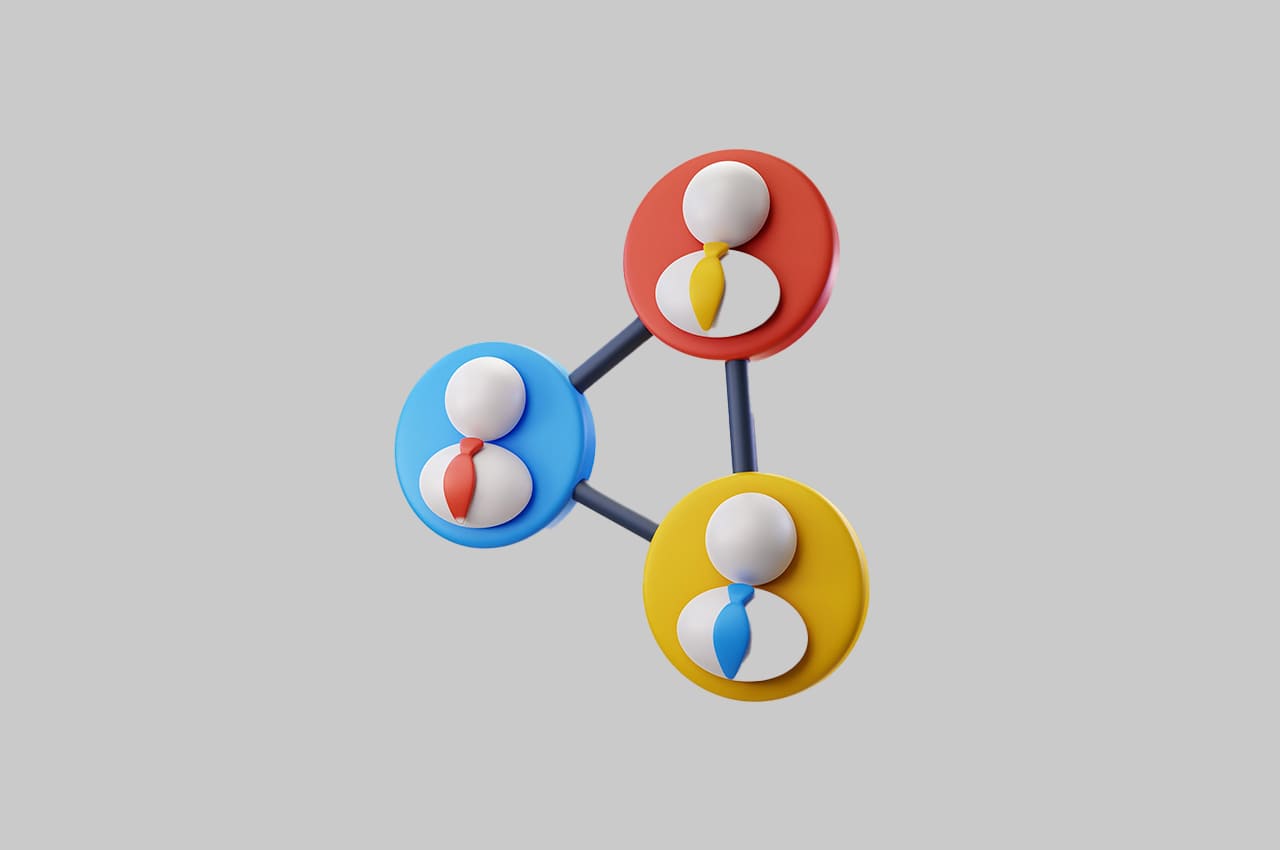Top 10 Employee Incentive Ideas That Will Actually Motivate Your Team in 2024

Motivating employees is crucial for driving team performance and productivity. Encouraging and inspiring motivation and engagement among employees, incentives serve as a pivotal element in driving the workforce. By understanding what truly motivates employees, organizations can design effective incentive programs that align with their goals and values.
This blog explores ten employee incentive ideas that have proven to be successful in motivating teams.
From offering bonuses based on personal achievements to prioritizing health and well-being, these ideas cover a range of approaches to inspire and reward employees. Putting these strategies into action enables organizations to cultivate a rewarding workplace atmosphere that elevates employee morale, enhances productivity, and contributes to overall success.
To read more about the importance of effective offboarding, refer to our blog Top 9 Best Practices for Effective Offboarding in 2023
Discover the power of employee incentives and unleash the full potential of your team.
Understanding Employee Motivation:
Employee motivation drives performance and productivity. Understanding motivators is key to effective incentives. Two types: positive (rewards, recognition) and negative (removing obstacles). Balance both in incentive programs to create a motivating environment. Motivated employees are engaged, committed, and satisfied, leading to higher productivity. Tailor incentives to individual preferences. Well-designed programs boost motivation, retention, and work culture. Explore specific incentive ideas to inspire your team.
1. The Power of Bonuses:
Employee bonuses are a potent motivational tool, rewarding personal achievements and exceptional performance. They establish a direct link between effort and rewards, inspiring employees to go the extra mile. To ensure effectiveness, transparent criteria, and fair evaluation are essential. Consider the overall compensation structure and financial capabilities when designing bonus programs. Balancing monetary bonuses with other incentives, like awards or extra time off, caters to diverse employee preferences. By recognizing outstanding performance, aligning efforts with goals, and fostering a culture of high performance, well-designed bonus programs drive teams toward achieving exceptional results.
2. Creative Company Merchandise:
Don’t overlook the power of company merchandise as employee incentives. Branded items like t-shirts, mugs, and notebooks instill pride and belonging in employees, reinforcing their connection to the organization. Tangible rewards create a sense of recognition and appreciation, motivating employees to excel. Creative company merchandise fosters a positive work environment, boosting morale and motivation. As employees proudly use these items, it showcases their loyalty and affiliation. This commitment to recognition enhances job satisfaction and cultivates a strong company culture. By offering unique and personalized merchandise, you demonstrate your appreciation for their contributions, further fueling their drive to succeed.
3. Prioritizing Health and Well-being:
In today’s fast-paced work environment, prioritizing employee health and well-being is crucial for maintaining motivation and productivity. By encouraging incentives that foster a well-balanced lifestyle, organizations can cultivate a workplace that nurtures both the physical and mental well-being of their employees. One effective approach is to provide free or subsidized healthy lunches to encourage nutritious eating habits. This not only improves employees’ overall health but also boosts energy levels and cognitive function, leading to increased productivity. Furthermore, companies have the option to introduce cycle-to-work programs, promoting physical well-being and contributing to carbon emission reduction. Providing on-site health screenings or access to fitness facilities can further support employees’ well-being by enabling them to conveniently monitor and improve their health. Moreover, companies have the opportunity to make work-life balance a priority by providing flexible work options and encouraging stress-relief programs. Empowering employees to manage personal commitments through flexible schedules can reduce exhaustion and promote their overall welfare.
4. Celebrating Milestones with Gifts:
Recognizing employee milestones boosts motivation and engagement. Celebrating work anniversaries, achievements, and birthdays shows appreciation and fosters a positive work environment. Thoughtful gifts like personalized notes or company-branded items make employees feel valued. Offering perks like a morning off or team lunches enhances celebration. These actions foster a stronger connection between employees and the company, serving as inspiration for sustained excellence. Investing in employee well-being and engagement through milestone celebrations demonstrates a commitment to a culture of appreciation.
5. Sign Up for Recognition Platforms:
Recognizing and appreciating employees’ contributions is vital for motivation and engagement. Utilizing recognition platforms facilitates peer-to-peer acknowledgment, fostering camaraderie and appreciation. These platforms allow colleagues to publicly or privately celebrate accomplishments, building a positive feedback culture. Employees earn points for recognized efforts and redeem them for rewards, adding excitement to the process. Implementing such platforms boosts morale, strengthens teamwork, and empowers employees to celebrate success. Selecting a user-friendly, customizable platform with robust reporting capabilities enhances the impact. Through cultivating a nurturing and recognition-driven workplace culture, companies nurture ongoing employee development and active involvement.
6. Team-based Incentives:
Team-based incentives are a potent way to boost employee motivation and collaboration. Fostering a sense of unity and purpose, setting collective goals, and acknowledging collaborative achievements strengthen the camaraderie among employees. This promotes a supportive work environment, enhancing productivity, innovation, and loyalty to the organization. Team-based incentives align individual efforts with broader organizational objectives, encouraging cooperation and mutual support within the team. Examples include team outings, collective bonuses, and recognition ceremonies for reaching milestones. By fostering transparent communication of goals and criteria, teams are motivated to collaborate harmoniously toward achieving success while ensuring fairness throughout the process. By leveraging team-based incentives effectively, organizations can nurture a collaborative, high-performing work culture.
7. Professional Development Opportunities:
Investing in employees’ professional development is a potent incentive that motivates while nurturing long-term growth and loyalty. By providing learning avenues like training, workshops, and certifications, organizations show commitment to employee success. Continuous development empowers employees, equipping them with new skills to take on challenges and boost job satisfaction. Moreover, it indicates a commitment to their professional development, cultivating loyalty, and decreasing employee turnover. Tailored programs align individual goals with organizational objectives, driving company success. Additionally, development opportunities facilitate networking and knowledge sharing. In conclusion, professional growth incentives demonstrate dedication to employees, leading to a motivated, skilled workforce that fuels innovation and success.
8. Professional Growth Initiatives:
Investing in employees’ professional growth is a powerful incentive that motivates and ensures long-term success within the organization. Providing skill development opportunities and career advancement showcases the organization’s value for employee growth and potential. Access to workshops, conferences, and online courses aligned with employees’ aspirations fosters continuous learning and improvement. Engaged and committed employees see a clear path for advancement, contributing to a skilled and competent workforce. Prioritizing ongoing development gives organizations a competitive edge, attracts top talent, and fuels sustainable growth. By supporting employees’ learning journey, both individuals and the organization thrive in a mutually beneficial relationship.
9. Employee Empowerment and Autonomy:
Employee empowerment and autonomy are powerful incentives that boost motivation and engagement. Trusting employees to make decisions fosters ownership and commitment to achieving goals. Empowered employees showcase creativity and innovation, contributing fresh ideas and solutions. Feeling valued, they thrive in a positive work environment, strengthening the employer-employee relationship. To implement this incentive, give employees greater control over tasks and decision-making, involve them in project planning, and support their initiatives. Recognize and celebrate their impactful decisions. Nurturing talent and professional growth, this approach motivates the team and positions your organization as an attractive workplace valuing employees’ development.
10. Flexible Work Arrangements:
Flexible work arrangements are a compelling employee incentive that promotes work-life balance and boosts motivation. Providing choices such as remote work, flexible hours, and compressed workweeks gives employees the freedom to customize their schedules according to personal preferences, leading to lower stress levels and higher job satisfaction. This approach also boosts productivity by reducing commuting time and enabling employees to concentrate on their tasks more efficiently. Embracing such flexibility builds a positive work environment and enhances employee retention. Offering this flexibility attracts top talent and promotes a healthier work-life integration. Ultimately, flexible work arrangements demonstrate an organization’s commitment to employee well-being and empowerment, yielding positive outcomes for both employees and the company.
How to Avoid 10 Common Employee Incentive Program Mistakes:
When implementing employee incentive programs, it’s crucial to avoid unintended consequences.
Here are key points to consider:
1. Perverse Incentives:
Avoid situations where the strategies to earn rewards conflict with the overall benefits of the employee incentive program. For example, if sales teams offer excessive discounts to boost sales numbers and receive more rewards, it may harm the organization’s profitability.
2. Unhealthy Competition:
Ensure that the incentive program promotes teamwork rather than pitting employees against each other. Rewarding individuals over teams can lead to negative behaviors like withholding help, sabotaging others, or cheating to win rewards.
3. Rewarding Luck:
Base rewards on actions that employees can control and influence. If rewards are perceived to depend on luck or favoritism, it can demotivate employees from putting in effort.
4. Ill-defined Goals:
Tie the goals of the incentive program to specific, measurable, and objective criteria. Avoid vague or arbitrary targets that might lead to employees feeling unfairly treated.
5. One-Size-Fits-All Approach:
Recognize that different employees are motivated by different incentives. Tailor rewards to match individual preferences and motivations for maximum effectiveness.
6. Ignoring Feedback:
Gather feedback from employees on the incentive program regularly. Use this input to refine and improve the program to better suit the employees’ needs.
7. Lack of Recognition:
Combine tangible rewards with genuine appreciation and recognition to reinforce positive behaviors and increase employee satisfaction.
8. Over Complicated Structure:
Keep the incentive program simple and easy to understand to avoid confusion among employees.
9. Exclusion of Non-Monetary Incentives:
Besides monetary rewards, include non-monetary benefits like flexible work arrangements or opportunities for skill development and career growth.
10. Lack of Communication:
Communicate the purpose, rules, and benefits of the incentive program to all employees. Transparency builds trust and understanding.
To read more about the importance of an effective recruitment process, refer to our blog Top 15 Strategies for an Effective Recruitment Process in 2023
Conclusion:
Employee incentives are vital for motivating teams, driving performance, and fostering a positive work environment. In this blog, we’ve explored various motivating ideas from achievement-based bonuses to promoting health and well-being. Tailoring incentives to the workforce and organizational goals is crucial for maximum effectiveness. Each employee is unique, so continuous assessment and refinement are essential. By implementing these ideas, you can create a culture of recognition, reward outstanding performance, and boost overall success. Invest in your team’s well-being and growth through incentives, and witness heightened motivation and engagement, propelling your organization to new heights of success. Launch your tailored incentive program today!




